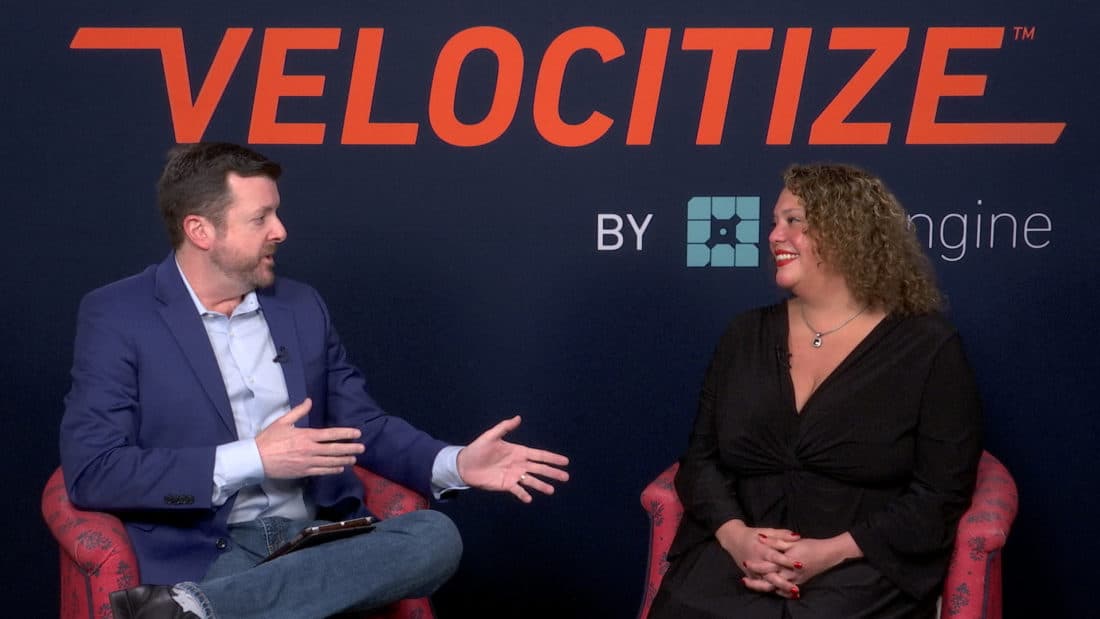I think it’s so important to understand the users and the demographics. Who is watching this? How do they prefer to watch this? How do they prefer to consume their content at the highest level? There are so many different ways that people choose to consume their content.
Amy Sheridan is Director of Performance Marketing at CBS Interactive, one of the world’s largest digital media companies and a subsidiary of CBS Corporation. Sheridan oversees all content partnerships across CBSi media properties, from Entertainment Tonight to CNET.
In this episode of Velocitize Talks, Sheridan shares her thoughts on PWAs, video marketing and audience segmentation.
Where is digital marketing going? (1:20)
It’s going towards AI. It’s going towards voice search. It is going towards PWAs, which are things like Google, Google Maps and Airbnb and on-demand products that you can order from your phone. I definitely see things moving towards that, a lot of artificial intelligence, voice search, and video growing and expanding.
A PWA (Progressive Web App) essentially functions as a mobile app and is downloaded via the internet, allowing the user to bypass the app store. Similar to other media organizations, CBSi is leveraging these new communications and content tools including PWAs, voice search and video across its properties.
Creating brand ambassadors (2:24)
Editorial integrity is the biggest thing I’ve seen [at CBSi]. They care so much about loyalty and their users. We also have an interesting dichotomy because we do a ton of stuff online and social video but we also have a lot of TV shows that back up our online repertoire. I really feel like the writers, both online and offline, are so focused on…trying to connect with their loyal users.
CBS took their multi-channel approach a step further, showcasing the diversity of their popular Star Trek series—available for streaming on CBS All Access—into an Instagram and Facebook campaign with a series of videos showing their support of Black Lives Matter. The network donated $1 for every tweet tagged #StarTrekUnitedGives.
The candid camera (5:32)
Video is an emerging trend that’s really going to take social by fire…that anyone can make a video. Video is so important especially working for a news company whether it’s social, online or off…[it’s] really changing and growing whether it’s user-generated content or it’s professional video. There’s going to be a lot of changing and growing on the video side of things.
In a Wyzowl State of Video Marketing Survey, 88 percent of video marketers reported that video gave them a positive ROI; 95 percent plan to increase or maintain their budgets; and of those who don’t currently use video, 59 percent plan to start.
Audience segmentation (6:25)
I think that’s by using data, loyalization and understanding demographic and psychographic profiles of each person and making them unique. Every person should see a unique piece of content depending on who they are and how they like to consume their content.
Audience segmentation is all about targeting the right people at the right time using specific criteria—namely behavioral, geographical, demographic, and psychographic—applicable across content channels.
Purpose driven marketing (6:59)
It’s so important for brands to lead with their values, whether they’re B2B or B2C. Even what we’re doing right here—you’re making content for people, you want to show what your company is about and prove that you’re a thought leader. Something like this is even a form of it.
When brands lead with their values, conversations start to happen. For example, this year more brands recognized Juneteenth in the wake of Black Lives Matter. According to Forbes, consumers favor brands who take a stand as well, with 66 percent saying they would switch from a product they typically buy to a new product from a purpose-driven company.
Paying attention (9:48)
I believe that Gen Z’ers are looking for things quickly, to get online and have it happen in the real world. I think the more we can foster that happening for them, that’s how to market to them and that’s how to get their attention.
In On the Cusp of Adulthood and Facing an Uncertain Future: What We Know About Gen Z So Far, Pew Research details how Gen Z feels and thinks about a variety of things, including their relationship with technology and social media. The survey was conducted in 2018, before TikTok’s rise in popularity, which now has 800 million active users worldwide and is the most downloaded app with 33 million downloads (even more than YouTube).
To learn more about CBS Interactive, visit their website, follow them on Facebook, LinkedIn and Twitter at @CBSi.
